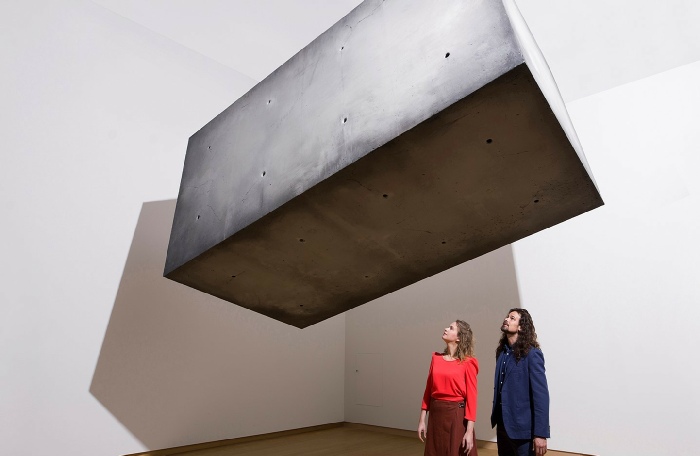Press Release
The Stedelijk Museum Amsterdam presents the debut museum solo of Studio Drift from April 25–August 26, 2018. In addition to early designs, the exhibition features new, previously unseen work by the Dutch duo Lonneke Gordijn and Ralph Nauta—the founders of Studio Drift. Specially for the presentation at the Stedelijk, Studio Drift will create the largest-

Studio Drift, Coded Nature
Stedelijk Museum, Amsterdam (The Netherlands)
25.04 - 26.08.2018


© ArtCatalyse International / Marika Prévosto 2018. All Rights Reserved
The work of Studio Drift occupies a unique place at the interface between tech art, performance, and biodesign. As a museum that has always placed great importance on both art and design, and performance, the Stedelijk Museum is the perfect venue to display this transdisciplinary work. Gordijn and Nauta engage with contemporary topics such as sustainability, the meaning of natural processes for today’s environment, and issues raised by the use of augmented reality. Their work focuses attention on a society in flux, shaped by the impact of fast-
Man-
The changing relationships between man, nature and technology are the focus of Studio Drift’s work. Their first project, Fragile Future, now an iconic series of light sculptures of dandelion heads individually applied to LED lights, brought the duo international renown. Over the years, the work evolved into a system composed of modules, and can be combined in various configurations. Placing and gluing the dandelion seeds to the LEDs is an extremely labor-
Curator Ingeborg de Roode: “We’ve been following Studio Drift for many years. After purchasing Fragile Future Chandelier 3.5 in 2015, we were waiting for the right moment to show the piece at the museum, together with other work by Studio Drift. Now that they have developed a consistent oeuvre throughout more than a decade and gained international acclaim with pieces such as Concrete Storm and Drifter, this is the perfect moment to present the first survey of their work in the Netherlands.”
The oeuvre of Studio Drift investigates the fluctuating relationships between nature, technology, and man. Their work engages with themes such as the (illusion) of freedom, the individual versus the group, and the tension between the real and the virtual world. They manifest natural processes by translating the data through technology and "breathe life into" objects by animating them. Many of their installations are interactive, making the viewer a participant in the work. The works’ tranquil beauty invites us to pause and experience the wonder of what is unfolding—to enjoy a few minutes of stillness in our hectic, fast-
Real and new realities
Several recent works explore the paradoxical relationship between the real and the virtual world. In Concrete Storm1 (2017) special glasses give the viewer an augmented reality of moving holograms—an accompaniment to an installation of concrete elements that exists in the physical world. It creates a new kind of reality—a "mixed reality."
The installation Drifter (2017) engages with a variety of themes: how does your perception of the world shift as you realize that what we take for granted now—a world composed of huge, immensely strong and stable structures—was once considered utopia? In the future, will a hovering concrete cuboid be as much a reality as today’s cities of concrete, as envisaged by Thomas More in 1516 in his book Utopia? Studio Drift first revealed a floating concrete monolith in the film Drifters (2016), (in collaboration with Sil van der Woerd), which receives its première in this exhibition. Drifters is a 12-
The installation Drifter (2017) engages with a variety of themes: how does your perception of the world shift as you realize that what we take for granted now—a world composed of huge, immensely strong and stable structures—was once considered utopia? In the future, will a hovering concrete cuboid be as much a reality as today’s cities of concrete, as envisaged by Thomas More in 1516 in his book Utopia? Studio Drift first revealed a floating concrete monolith in the film Drifters (2016), (in collaboration with Sil van der Woerd), which receives its première in this exhibition. Drifters is a 12-
Studio Drift, Drifter, Stedelijk Museum Amsterdam, 2018. Courtesy of Pace gallery. Photo: Tom Cornelissen.
Exhibition April 25 -
